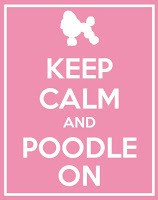Ginger Simpson's Blog, page 18
July 29, 2019
Just A Taste - Ginger Simpson
 Classic Monday from Ginger Simpson
Classic Monday from Ginger SimpsonJoy Garrett is preparing to marry the man of her dreams and needs her birth certificate inorder to get a passport for her honeymoon. For some reason her mother wants to avoid the issueand urges her to enjoy the good ol' USA. While pilfering in her mother's things in the attic, Joycomes across a birth certificate, and although the date, hospital and doctor are a match with her,
the paper certifies someone else's birth... What secret is her mother keeping?
Excerpt:Fresh from her shower, Joy Garrett stood naked in front of the mirror and fingered the inch-longscar just below her navel. Surgery performed on her at ten months had left the jagged line.She’d forgotten the reason her mother gave for the operation, but the obvious results, althoughsmall, marred Joy’s otherwise flawless torso and irked her. Anyone who wanted to keep ScottPorter on a short leash had to look their best.
Wrapped in terrycloth, she went into the bedroom. Her heart pounded with anticipation ofthe evening ahead—her first cocktail party and introduction to Scott’s co-workers. She plannedto make this an evening he’d never forget.
She slipped into her matching black bra and thong and then removed her dress from thehanger on the closet door. Thankfully, those dreadful panty hose of old and annoying slips werepassé these days. “The less the better,” Joy murmured.
The plastic bag, with the retail store’s name emblazoned across it, crackled as she slipped itoff of her slinky dress. Annoying static plastered it to her hand. She peeled the cloyingcellophane away, wadded it, and flung it into the trash. Visions of her luscious date ran throughher mind: dark hair, eyes bluer than the sky, tall…and those shoulders—broad enough to makeother guys envious.
“Scott Porter.” His name dripped from her tongue like water from melting ice as sheshimmied into her dress. Even though they’d been seeing one another for the past six months,thoughts of him still turned her stomach fluttery. She hoped to marry him one day. Of course, herdreams hinged on him asking.
She had one year left to complete her master’s degree and still lived at home. A part-timejob didn’t offer the luxury of an apartment. Sharing the rent with a roommate was an option, butshe was holding out for something better. She scanned her room, noting the floral drapes andfrilly bedspread, and then wondered what style Scott would prefer in the bedroom they’d share.Yep, someday she’d be Joy Ann Porter if she had her way. She warmed at the thought of wakingup in Scott’s arms.
This and my other short stories are available at a discounted price in various downloadable formats at Muse It Up Publishing
Published on July 29, 2019 00:30
July 28, 2019
Sunday Poodle Talk #2

My little Chanel came down with an upper respiratory infection this week.
She had a fever, cough, and diarrhea so I called her vet and he took her right in.
He was concerned. I was concerned. Chanel is taking 10 days of antibiotics (she received an injection before she left the clinic), cough medication, tummy medication, and has a special diet for the next 2 weeks.
She's improving, though she sneezes when I take her outside to take care of her business (it's 100+ here in SoCal). She's napping throughout and is becoming more like her usual 'poodle' self.
We worry about all of our loved ones (family, friends, co-workers) but fur-babies seem to worry us because they become ill so quickly--or are ill and we aren't aware there's even a problem.
My little girl is a re-homed poodle-mix. 8 lbs and a couple of wiggles, I like to say.
I belong to several poodle groups on Facebook, and follow Adopt-a-Pet for fosters in our area.
Please share your poodle/poodle-mix stories in the comment section :-).
Birthday Parties, fashion accessories, and poodle quirks are always fun to share.

Have a wonderful week,

Published on July 28, 2019 23:34
July 25, 2019
Writing Around You Day Job by Connie Vines
It’s a 5:00 world, at least that is what the popular “Vogues” song from yesteryear (1965) tells us. In 2003, the song was reborn via the movie, “Big Fish”.
Up every morning just to keep a job
I gotta fight my way through the hustling mob
 Sounds of the city pounding in my brain
Sounds of the city pounding in my brain
While another day goes down the drain
(Yeah, yeah, yeah) but it's a five o'clock world when the whistle blows
No-one owns a piece of my time
As most writers know, writing hours are made after you complete your day job. You time is also doled out in little snippets while watching your child’s water polo practice, Harp recital, or while boiling pasta for the evening meal.
For those of us who may find writing until 1:00 AM and having the alarm set for 5:00 AM a bit fatiguing. It seems we are keeping good company.
Some of these stories you may be familiar with, others may come as a surprise.
He may be a renowned author of over 50 novels, but Stephen King wasn't always a full-time writer — his time as a high school janitor helped inspire the novel Carrie. King originally threw the first draft of the story in the trash, but his wife Tabitha fished it out and told him to keep going because she wanted to know how it ended.
Before she wrote To Kill a Mockingbird and Go Set a Watchman, Harper Lee worked as an airline reservations clerk in New York. She eventually quit when her friends helped support her financially so she could finally write full time.
He's a well-known author now, but before Nicholas Sparks wrote The Notebook, he worked odd jobs, including selling dental products over the phone.
She was a talented science-fiction writer and awarded the MacArthur Fellowship — but before her success as a writer, Octavia Butler worked as a potato chip inspector. She also worked as a dishwasher and a telemarketer, using these day jobs to support her writing. And they really were day jobs, because Butler would get up at 2 a.m. to do her writing before going in to work! Amazing.
She's known as a mystery novelist; Agatha Christie was once an assistant apothecary. She reportedly knew a lot about poisons, which was no doubt helpful as she created the characters of Hercule Poirot and Miss Marple. Just goes to show that you never know what knowledge will come in handy later.
Bram Stoker wrote Dracula while working as the manager of the Lyceum Theatre in London, imagining Henry Irving, a famous actor and owner of the theater, playing the vampire himself.
So how about you? What is/was your day job(s)?
Does your day job get your creative ideas flowing?
I work in the field of education, students, staff, and events give me ideas—or at least creative thoughts.
Sometimes, after a long day. It will take me five minutes to write a sentence.
Five minutes of staring into space until the idea of writing an opening line about how long it took me to think of an opening line popped into my head.
In the grand scheme of things, five minutes isn't all that long. But for a writer, five minutes for nine words can add up.
Writing takes time. A whole lot of time.
I always imagined I'd write my first book in a vacation hideaway overlooking the beach or cabin in the Grand Tetons. Unfortunately, most first-time authors won't get to live out this literary fantasy.
In fact, circumstances will most likely be the opposite: writing during off-hours, scribbling notes in public, enjoying less sleep than you'd like and slowly losing your mind while trying to maintain personal relationships a full-time job and run a household.
Say you've finally found a quiet hour to yourself. You know you should write, but you're tired from work and are only on season four of “Game of Thrones.” What were once simple choices become tormenting tests of will power and resolution.
As George Orwell famously stated, “Writing a book is a horrible, exhausting struggle, like a long bout of some painful illness.”
In his book “On Writing: A Memoir of the Craft,” Stephen King shared a similar though more concise sentiment: “The road to hell is paved with adverbs.”
So how do I stay on track to reach my deadline?
I’ve learned to say “no.”
I also participate online instead of driving to Orange County Romance Writers or L.A.R.A. monthly meetings; I sign-up for online classes. I miss interacting with other writers, and my plotting group, but talking isn’t going to write my novel.
This doesn't mean you have to say no to everything, but writing is always going to require compromise.
A large part of writing for me is preparing my environment. I like to have a cup of coffee by my side, music playing. I prefer to write from 8:00 to 11:30 PM every other day. On Fridays I write until 2:00 AM, Saturdays after the gym and running errands. I’ll write for a few hours, then spend time on other tasks, until about 8:00 PM I will write until 10 or 11:00. (though is writing until 2:00 this morning).
Sunday, unless I have a blog post due/or am on a deadline, I do not write. I may edit my week's work in the evening but that is the extent of my writing. This is family time for me.
Remember: If you keep waiting for the perfect moment, the perfect time, you’ll never get anything done.
Pencil in you time to write on your calendar, or task journal. Honor that time like you do all of your other commitments.
You may find your day job fits in quite nicely into your novel. After all, if you have life experience, no research in needed.
Happy Reading and Writing,

Up every morning just to keep a job
I gotta fight my way through the hustling mob
 Sounds of the city pounding in my brain
Sounds of the city pounding in my brainWhile another day goes down the drain
(Yeah, yeah, yeah) but it's a five o'clock world when the whistle blows
No-one owns a piece of my time
As most writers know, writing hours are made after you complete your day job. You time is also doled out in little snippets while watching your child’s water polo practice, Harp recital, or while boiling pasta for the evening meal.
For those of us who may find writing until 1:00 AM and having the alarm set for 5:00 AM a bit fatiguing. It seems we are keeping good company.
Some of these stories you may be familiar with, others may come as a surprise.
He may be a renowned author of over 50 novels, but Stephen King wasn't always a full-time writer — his time as a high school janitor helped inspire the novel Carrie. King originally threw the first draft of the story in the trash, but his wife Tabitha fished it out and told him to keep going because she wanted to know how it ended.
Before she wrote To Kill a Mockingbird and Go Set a Watchman, Harper Lee worked as an airline reservations clerk in New York. She eventually quit when her friends helped support her financially so she could finally write full time.
He's a well-known author now, but before Nicholas Sparks wrote The Notebook, he worked odd jobs, including selling dental products over the phone.
She was a talented science-fiction writer and awarded the MacArthur Fellowship — but before her success as a writer, Octavia Butler worked as a potato chip inspector. She also worked as a dishwasher and a telemarketer, using these day jobs to support her writing. And they really were day jobs, because Butler would get up at 2 a.m. to do her writing before going in to work! Amazing.
She's known as a mystery novelist; Agatha Christie was once an assistant apothecary. She reportedly knew a lot about poisons, which was no doubt helpful as she created the characters of Hercule Poirot and Miss Marple. Just goes to show that you never know what knowledge will come in handy later.
Bram Stoker wrote Dracula while working as the manager of the Lyceum Theatre in London, imagining Henry Irving, a famous actor and owner of the theater, playing the vampire himself.
So how about you? What is/was your day job(s)?
Does your day job get your creative ideas flowing?
I work in the field of education, students, staff, and events give me ideas—or at least creative thoughts.
Sometimes, after a long day. It will take me five minutes to write a sentence.
Five minutes of staring into space until the idea of writing an opening line about how long it took me to think of an opening line popped into my head.
In the grand scheme of things, five minutes isn't all that long. But for a writer, five minutes for nine words can add up.
Writing takes time. A whole lot of time.
I always imagined I'd write my first book in a vacation hideaway overlooking the beach or cabin in the Grand Tetons. Unfortunately, most first-time authors won't get to live out this literary fantasy.
In fact, circumstances will most likely be the opposite: writing during off-hours, scribbling notes in public, enjoying less sleep than you'd like and slowly losing your mind while trying to maintain personal relationships a full-time job and run a household.
Say you've finally found a quiet hour to yourself. You know you should write, but you're tired from work and are only on season four of “Game of Thrones.” What were once simple choices become tormenting tests of will power and resolution.
As George Orwell famously stated, “Writing a book is a horrible, exhausting struggle, like a long bout of some painful illness.”
In his book “On Writing: A Memoir of the Craft,” Stephen King shared a similar though more concise sentiment: “The road to hell is paved with adverbs.”
So how do I stay on track to reach my deadline?
I’ve learned to say “no.”
I also participate online instead of driving to Orange County Romance Writers or L.A.R.A. monthly meetings; I sign-up for online classes. I miss interacting with other writers, and my plotting group, but talking isn’t going to write my novel.
This doesn't mean you have to say no to everything, but writing is always going to require compromise.
A large part of writing for me is preparing my environment. I like to have a cup of coffee by my side, music playing. I prefer to write from 8:00 to 11:30 PM every other day. On Fridays I write until 2:00 AM, Saturdays after the gym and running errands. I’ll write for a few hours, then spend time on other tasks, until about 8:00 PM I will write until 10 or 11:00. (though is writing until 2:00 this morning).
Sunday, unless I have a blog post due/or am on a deadline, I do not write. I may edit my week's work in the evening but that is the extent of my writing. This is family time for me.
Remember: If you keep waiting for the perfect moment, the perfect time, you’ll never get anything done.
Pencil in you time to write on your calendar, or task journal. Honor that time like you do all of your other commitments.
You may find your day job fits in quite nicely into your novel. After all, if you have life experience, no research in needed.
Happy Reading and Writing,

Published on July 25, 2019 01:30
July 21, 2019
Sunday Poodle Talk
Published on July 21, 2019 00:08
July 20, 2019
WIP and Future Book Ideas by Connie Vines #Round Robin 74
What book (or type of book) are you currently working on? Do you have ideas for future books?
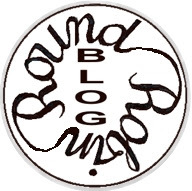

At the moment, I’m working on revisions for my anthology, “Gumbo Ya Ya” for women who like romance Cajun.
The anthology is comprised of 5 stories with the common element being the setting (New Orleans, LA) with one of the main characters of each story being a Cajun.
From Wikipedia:
The Cajuns (/ˈkeɪdʒən/; Louisiana French: les Cadiens), also known as Acadians (Louisiana French: les Acadiens),are an ethnic group mainly living in the U.S. state of Louisiana, and in the Canadian maritimes provinces as well as Québec consisting in part of the descendants of the original Acadian exiles—French-speakers from Acadia (L'Acadie) in what are now the Maritimes of Eastern Canada. In Louisiana, Acadian and Cajun are often used as broad cultural terms without reference to actual descent from the deported Acadians. Today, the Cajuns make up a significant portion of south Louisiana's population and have exerted an enormous impact on the state's culture.
While Lower Louisiana had been settled by French colonists since the late 17th century, the Cajuns trace their roots to the influx of Acadian settlers after the Great Expulsion from their homeland during the French and British hostilities prior to the Seven Years' War (1756 to 1763). The Acadia region to which modern Cajuns trace their origin consisted largely of what are now Nova Scotia, New Brunswick, Prince Edward Island plus parts of eastern Quebec and northern Maine. Since their establishment in Louisiana, the Cajuns have developed their own dialect, Cajun French, and developed a vibrant culture including folkways, music, and cuisine. The Acadiana region is heavily associated with them.
Since I write cross-genre fiction, my stories will each be a romance, however, each story will reflect a different type of romance. Sweet Romantic Comedy, Sensual Romance, Romantic Suspense, Time-Travel, and Paranormal—all of which reflect Cajun culture and New Orleans, LA elements.
Since I always immerse myself in the WIP, I’m brewing chicory coffee, making gumbo and jambalaya. Since my husband is from Louisiana, he’s loving it!
Ideas for future books? Of course. Always.
I’m plotting books 2 and 3 of my Sassy and Fun Fantasy Series. I’m also working on a contemporary romance novel, too …well, you will just need to wait and see (I’m keeping this one under wraps for the moment).
Happy Reading,

Remember to stop by and see what these wonderful authors have to share with out:
Skye Taylor http://www.skye-writer.com/blogging_by_the_seaMarci Baun http://www.marcibaun.com/blog/Dr. Bob Rich https://wp.me/p3Xihq-1EWBeverley Bateman http://beverleybateman.blogspot.ca/Helena Fairfax http://www.helenafairfax.com/blogA.J. Maguire http://ajmaguire.wordpress.com/Victoria Chatham http://www.victoriachatham.comJudith Copek http://lynx-sis.blogspot.com/Fiona McGier http://www.fionamcgier.com/Rhobin L Courtright http://www.rhobincourtright.com


At the moment, I’m working on revisions for my anthology, “Gumbo Ya Ya” for women who like romance Cajun.
The anthology is comprised of 5 stories with the common element being the setting (New Orleans, LA) with one of the main characters of each story being a Cajun.
From Wikipedia:
The Cajuns (/ˈkeɪdʒən/; Louisiana French: les Cadiens), also known as Acadians (Louisiana French: les Acadiens),are an ethnic group mainly living in the U.S. state of Louisiana, and in the Canadian maritimes provinces as well as Québec consisting in part of the descendants of the original Acadian exiles—French-speakers from Acadia (L'Acadie) in what are now the Maritimes of Eastern Canada. In Louisiana, Acadian and Cajun are often used as broad cultural terms without reference to actual descent from the deported Acadians. Today, the Cajuns make up a significant portion of south Louisiana's population and have exerted an enormous impact on the state's culture.
While Lower Louisiana had been settled by French colonists since the late 17th century, the Cajuns trace their roots to the influx of Acadian settlers after the Great Expulsion from their homeland during the French and British hostilities prior to the Seven Years' War (1756 to 1763). The Acadia region to which modern Cajuns trace their origin consisted largely of what are now Nova Scotia, New Brunswick, Prince Edward Island plus parts of eastern Quebec and northern Maine. Since their establishment in Louisiana, the Cajuns have developed their own dialect, Cajun French, and developed a vibrant culture including folkways, music, and cuisine. The Acadiana region is heavily associated with them.
Since I write cross-genre fiction, my stories will each be a romance, however, each story will reflect a different type of romance. Sweet Romantic Comedy, Sensual Romance, Romantic Suspense, Time-Travel, and Paranormal—all of which reflect Cajun culture and New Orleans, LA elements.
Since I always immerse myself in the WIP, I’m brewing chicory coffee, making gumbo and jambalaya. Since my husband is from Louisiana, he’s loving it!
Ideas for future books? Of course. Always.
I’m plotting books 2 and 3 of my Sassy and Fun Fantasy Series. I’m also working on a contemporary romance novel, too …well, you will just need to wait and see (I’m keeping this one under wraps for the moment).
Happy Reading,

Remember to stop by and see what these wonderful authors have to share with out:
Skye Taylor http://www.skye-writer.com/blogging_by_the_seaMarci Baun http://www.marcibaun.com/blog/Dr. Bob Rich https://wp.me/p3Xihq-1EWBeverley Bateman http://beverleybateman.blogspot.ca/Helena Fairfax http://www.helenafairfax.com/blogA.J. Maguire http://ajmaguire.wordpress.com/Victoria Chatham http://www.victoriachatham.comJudith Copek http://lynx-sis.blogspot.com/Fiona McGier http://www.fionamcgier.com/Rhobin L Courtright http://www.rhobincourtright.com
Published on July 20, 2019 01:00
July 15, 2019
My Blog Post at Romance Gems --The Key to Your Heroine--Is Hidden in Your Closet?
Stop by and read my latest post @RomanceGerms
Remember to sign-up for this month's Beaches and Boy Friends give-a-ways.
The Raffelcopter Contest Runs though July!
The Key to Your Heroine--Is hidden in Your Closet?
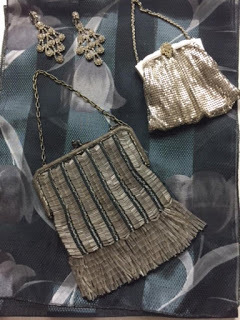
Remember to sign-up for this month's Beaches and Boy Friends give-a-ways.
The Raffelcopter Contest Runs though July!
The Key to Your Heroine--Is hidden in Your Closet?

Published on July 15, 2019 01:00
June 28, 2019
I'm Blogging about Cowboys and National Cowboy Day!
Published on June 28, 2019 00:30
June 22, 2019
Life Events in My Stories—Here’s the Real Scoop! By Connie Vines
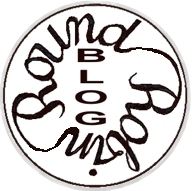
This Month’s Topic: Has an event in your life, or that of someone you know, or one covered in the news ever worked its way into one of your stories?
I believe we are all influenced by our environment and, being social creatures, we are also empathetic to the people we encounter in life.
Each of my novels, short-stories, and blog posts touch on an event in my life, a factual experience in someone’s life.
When I was writing for children’s magazines my topics included historical events or modern-day mysteries. My YA historical novel, Tanayia-Whisper upon the Water, has excerpts from newspapers of the 1800's for chapter intros. I experienced the wind and the sadness which still surrounds Wounded Knee, I’ve dance at Powwows, and made fry-bread for hungry children.
Having been interview (unexpectedly) by a news crew, I know the irritation you feel when someone shoved a mic in your face (Lynx’s interview scene in Lynx, Rodeo Romance).
I believe the true test of a writer is researching a subject and making the event seem real to the reader that he/she can ‘live the story’. Obviously, writers have never been a 16th century pirate, or a vampire, however, these stories are written and are believable. Non-fiction worlds are created, we mourn the death of our beloved fictional characters, we fall in love with a hero or two.
Since I grew up in a military family, relocation was a way of life. My characters are seldom stay-forever-in-one town people. I am able to share the force of a hurricane, a tornado forming on the plains, sea-salt and sand in your clam-bake meal, the smell of a swamp, and fragrance of café au latte on a cool May morning in the French Quarter of New Orleans, Louisiana.
** From Tanayia—Whisper upon the Water:
My gaze narrowed. Each day I watched Anna Thunder hide her slice of bread in her skirt pocket. I did not why. Each night I watched. She did not bring the food from her pockets, nor were there crumbs leaving a trail among her belongings.
“Why? Why do you ask this?”
The Comanche was thin. Her arms were like the bare branches of a sapling tree. Anna Thunder did not eat the bread she hoarded.
“Will Apache bring bread?” she hissed.
My stomach growled. Sister Enid had returned last evening and supervised the breakfast meal today. The oatmeal had been thin. There was little nourishment for my growing body. The bread Sister Kathleen gave me kept the pains of hunger from my stomach. I did not want to give my food to my enemy.
**Please visit the blog sites of these wonderful writers and read the stories she/he have in store for you!
Happy Reading!
Connie
>> Victoria Chatham http://www.victoriachatham.com
>> Skye Taylor http://www.skye-writer.com/blogging_by_the_sea
>> Judith Copek http://lynx-sis.blogspot.com/
>> Dr. Bob Rich https://wp.me/p3Xihq-1Dm
>> Beverley Bateman http://beverleybateman.blogspot.ca/
>> Margaret Fieland http://margaretfieland.wordpress.com
>> Anne Stenhouse http://annestenhousenovelist.wordpress.com/
>> A.J. Maguire http://ajmaguire.wordpress.com/
>> Diane Bator http://dbator.blogspot.ca/
>> Fiona McGier http://www.fionamcgier.com/
>> Rhobin L Courtright http://www.rhobincourtright.com
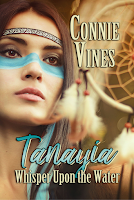
BUY LINKS
Multiple Buy Links Tanayia
Published on June 22, 2019 00:30
June 21, 2019
NATIONAL TAKE YOUR DOG TO WORK DAY – June 21, 2019
Every year employees across the country bring their dogs to work the Friday after Father’s Day. It’s National Take Your Dog to Work Day.
A celebration of the companionship between canine and human, National Take Your Dog to Work Day hopes to inspire others to adoptions from shelters and humane societies.
HOW TO OBSERVE
To find participating employers and to download a toolkit visit Pet Sitters International. Use #NationalTakeYourDogToWorkDay or #TYDTWD to share on social media.
HISTORY
Take Your Dog to Work Day originated in the United Kingdom in 1996. Then in 1999, Pet Sitters International founded the first day in the United States.
I am aware that there are companies: Amazon, Purina (and many others I'm certain) that allow you to bring your pet work.
However, I would check with your employer before bringing Rover or Boots to work to celebrate this special day.
To help avoid coworkers’ pet peeves, here are 14 rules for bringing dogs (and cats) to work.
1. Make sure no one objects
“The problem: not everybody loves pets. Staff may suffer from allergies/ phobias/or didn't enjoy animals running around. "
2. Check the company's or your insurance
“Even the most docile of dogs could become hostile in an unfamiliar environment or around other pets, so make sure you're covered in the event that a dog [or cat] acts out."
3. Establish pet-free zones
“It's a lot more distracting to have an animal join meetings than it is to have them wandering the main floor [or parked in an office]. Set some ground rules for where pets can roam free, and where they should steer clear.”
4. Ensure your office is safe for pets (pet-proofed)
“Things like cables, cords and open trash bins can all be tempting for pets. Pet proof your office space to be sure it's safe. It also helps if cats and smaller dogs wear a bell on their collar so you know when they're under foot.”
5. Pets must be supervised by its owner
6. The pet must be OK around other animals
7. The animal can't be super hyper
8. Come prepared
“Make sure that if you bring your dog in to work, that they have everything they will need throughout the day."
9. Clean up after your pet
10. Take a photo or two to remember the day.

Credit Photo: PetSitter
Happy Take Your Dog to Work Day!
Connie
A celebration of the companionship between canine and human, National Take Your Dog to Work Day hopes to inspire others to adoptions from shelters and humane societies.
HOW TO OBSERVE
To find participating employers and to download a toolkit visit Pet Sitters International. Use #NationalTakeYourDogToWorkDay or #TYDTWD to share on social media.
HISTORY
Take Your Dog to Work Day originated in the United Kingdom in 1996. Then in 1999, Pet Sitters International founded the first day in the United States.
I am aware that there are companies: Amazon, Purina (and many others I'm certain) that allow you to bring your pet work.
However, I would check with your employer before bringing Rover or Boots to work to celebrate this special day.
To help avoid coworkers’ pet peeves, here are 14 rules for bringing dogs (and cats) to work.
1. Make sure no one objects
“The problem: not everybody loves pets. Staff may suffer from allergies/ phobias/or didn't enjoy animals running around. "
2. Check the company's or your insurance
“Even the most docile of dogs could become hostile in an unfamiliar environment or around other pets, so make sure you're covered in the event that a dog [or cat] acts out."
3. Establish pet-free zones
“It's a lot more distracting to have an animal join meetings than it is to have them wandering the main floor [or parked in an office]. Set some ground rules for where pets can roam free, and where they should steer clear.”
4. Ensure your office is safe for pets (pet-proofed)
“Things like cables, cords and open trash bins can all be tempting for pets. Pet proof your office space to be sure it's safe. It also helps if cats and smaller dogs wear a bell on their collar so you know when they're under foot.”
5. Pets must be supervised by its owner

6. The pet must be OK around other animals
7. The animal can't be super hyper
8. Come prepared
“Make sure that if you bring your dog in to work, that they have everything they will need throughout the day."
9. Clean up after your pet
10. Take a photo or two to remember the day.

Credit Photo: PetSitter
Happy Take Your Dog to Work Day!
Connie
Published on June 21, 2019 00:30
May 28, 2019
I'm blogging today at BWL Author Blog
Here's the link!
I'm blogging about Characters and Cooking. I've included a cheesy potato casserole recipe too.

I'm blogging about Characters and Cooking. I've included a cheesy potato casserole recipe too.

Published on May 28, 2019 00:30

